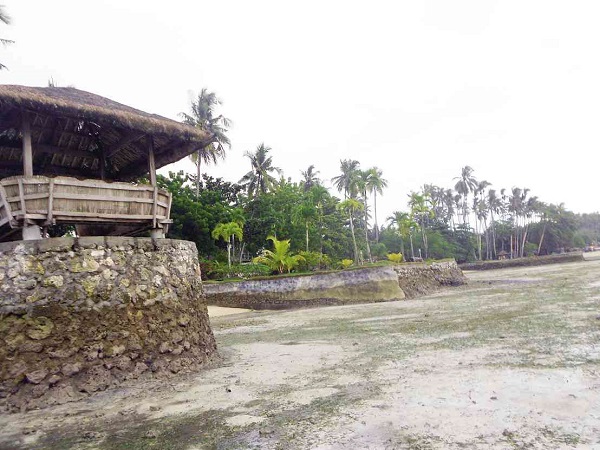ISLAND GARDEN CITY OF SAMAL—On the deck of the roll-on, roll-off ferry boat that took off from Davao City, passengers prepare to disembark. Mostly in their slippers and shirts, they slowly inch their way to the ferry docking area, anticipating a day of leisure and total abandon in this island getaway, only 15 minutes away from Davao City.
But while Samal island offers itself to visitors who can afford private resorts, most of the people who want to access the beaches for free increasingly find themselves being fenced off from the pleasures of the sea.
Mayor Aniano Antalan, of the Island Garden City of Samal (Igacos), said the island is keen on implementing a law that ensures public access to the beach this year.
“We are just following the policy of the DENR (Department of Environment and Natural Resources),” he said, “Beaches are supposed to be open to the public.”
But Araceli Ayuste, vice president of Samal City Resort Owners’ Association, said most resorts in Samal would have to close down if the government insisted on open access.
“It’s not just a 30- or 40-per cent loss that we are talking about here,” she said. “Most of the resorts will have to close down because they would no longer be able to sustain their operations,” she added.
Ayuste said seclusion and privacy have been the main selling points of most of the beaches in the area, and these may no longer be feasible once resorts open their beaches to the public.
“Aside from the problem of security, most of the resorts package their areas for the privacy and seclusion they can offer to visitors, so, they cannot just allow anybody to come in,” she said.
Felix Alicer, regional technical director of Land Management Services, told reporters in July that the DENR was teaming up with the local government of Igacos to regulate the construction of resort infrastructures, to allow open public access to the beaches, based on Presidential Decree No. 1067 or the Water Code of the Philippines.
The law requires structures to be several meters away from the shore and guarantees public access to beaches.
Alicer said even if resort owners had required payment for entry into their lands, they still would have to guarantee free access for the public to the beaches.
Ayuste said the law was not applicable to Samal island, where most of resorts are nestled on cliffs or on elevated areas that needed to be walled up.
She also said she could not understand why the law, which was passed during the Marcos dictatorship, was being implemented only now.
Resort owners wrote a petition to the DENR early this month, calling for an exemption from the law, which they said countered the government’s thrust to promote tourism on the island.
“For every rule, there is an exception,” said the position paper signed by engineer Pastor M. Lozada Jr., head of the Igacos Chamber of Commerce and Industry, and Ayuste, who is also chair of the Davao del Norte Provincial Tourism Council.
Resort owners argued that under the National Tourism Development Plan for 2011 to 2016, the Department of Tourism outlined three strategic directions to reach its goal of bringing in 10 million foreign visitors and 56.1 million domestic tourists.
Under the Philippine Development Plan, the government identified tourism as among the priority sectors.
“Security, privacy, competent service, well-trained personnel are very important factors that will increase this competitiveness,” the letter said.
The letter said the open-access plan will run counter to the government’s move to promote tourism because “security, privacy are among the important factors to make the resorts competitive.”
But Ayuste said resort owners were still awaiting their next meeting with the DENR and Igacos officials to further discuss the issue. Antalan also said the local government still had to confer with the DENR on how to enforce the law.
Just a short tricycle ride away from Babak, landowner Napoleon Villarica stands on a small veranda of his house on the long stretch of beaches that his family owns in the village of Peñaplata.
He said he never planned to build a breakwater or a fort wall on the beaches that he owns. “I don’t think I have the right to do that,” he said. “Others, however, know their way. This is the poblacion area, not the resort haven, after all,” he said.
“Better go to the resorts. They are doing that,” Villarica said.
